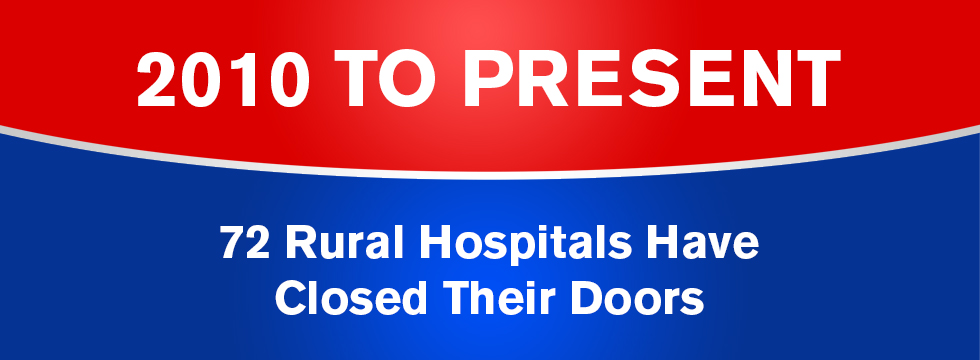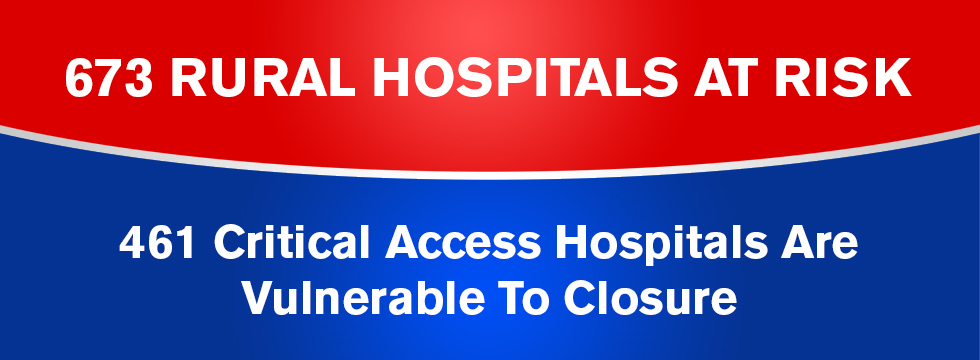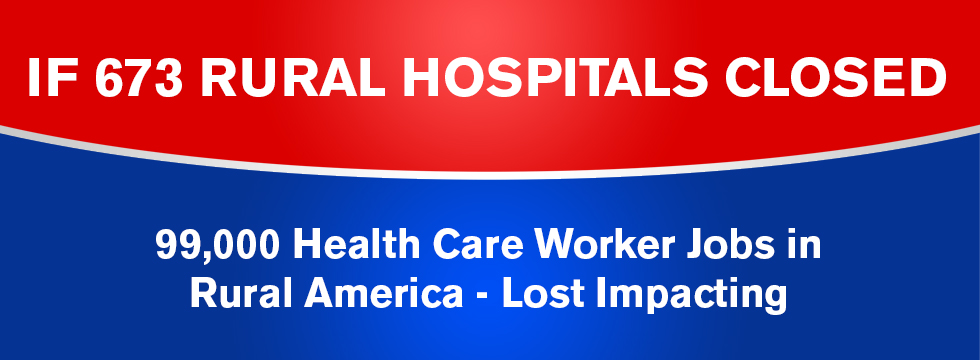
Story of Two Hospital C-Suite Executives
From a certain little town in Florida two individuals, a man and a woman, went forward to become C-suite executives for Rural Hospitals. Each of them had enjoyed the same educational advantages, obtained their FACHE certification, and so as anyone could judge, their prospects for success were equally good.
One, the woman, her rural hospital was a success, even though it was in a smaller community with less financial resources. The other, the man, spent his years at the helm always struggling to make payroll, passing on hiring amazing staff that he could not afford, and could never find the monies to purchase the new equipment that would better serve his community.
He “had hard luck” the town folks explained. He never seemed to “catch a break” for his rural hospital.
The difference in the two individuals was not a difference of capacity but a difference in decision. The woman saw the tide of expansion, trained herself to focus on positive opportunities, and so swam with the tide.
The other, the man merely drifted. The history of these two hospital executives will be repeating in hundreds of thousands of community member’s lives in the next few months.
What Made The Difference
Is the future of your rural hospital worth half an hour’s serious thought?
If it is, then take down a note about the history of the United States’ hospital industry. You will discover this unmistakable truth:
Opportunity does not flow in a steady stream, like a river – rather, it comes and goes in great tides like the sea.
☤ Until 1914, a patient who received charitable care from a hospital had no right to deny care or refuse to take part in medical experiments. The Schloendorff versus Society of New York Hospital legal case changed that, establishing informed consent, a high tide moment.
☤ Until the 1960’s Hospitals were segregated by race, a low tide era in the history of health institutions. According to a 2003 article published in the American Journal of Public Health, some hospitals treated patients of certain races only, while other facilities were segregated by floor or sections, with better amenities provided to white patients.
☤ 1970’s, a patient with a hernia could spend four days in the hospital after an operation. Now, the surgery is performed on an outpatient basis. This trend toward moving patients out of the hospital quickly became important to the bottom line, another high tide moment.
☤ 1980’s the industry began putting an emphasis on controlling health costs. Shorter stays resulted in higher profit, because hospitals were reimbursed by procedure in what’s known as a “fee-for-service” payment model, a high tide moment.
☤ 2010’s has been filled with mixed messages from Government agencies responsible for health IT, tend to shift deadlines, not provide enough clarity, succumb to political pressure at times, with several examples including, ICD-10, Meaningful Use, population health, patient identification numbers, sequestration, and the non expansion of Medicaid. Another low tide moment.
“Health is driven by health care, but it also is driven as much by everything that is not health care – all the social factors, economic factors and demographics,” says Maulik Joshi, senior vice president and CEO of the American Hospital Association’s Health Research & Educational Trust.
2010 to present….
72 rural hospitals have closed their doors for good.
673 rural hospitals, with 461 Critical Access designations are vulnerable to closure.
2 distinct groups, 210 hospitals are most vulnerable to closure, and 463 are at risk.
1 rural hospital on average is closing per month, with the pace quickening.
Rural hospital closure rate is Six times higher in 2015 compared to 2010.
Do you also feel like you are on a dingy taking on water in a vast ocean surrounded by hungry sharks circling with no land in sight ?
If these 673 at risk rural hospitals closed……
☤ 99,000 health care worker jobs in rural America would be lost
☤ Impacting 11.7 million patient encounters
☤ An estimated $277 Billion loss in gross domestic product…. low tide moment.
There is a high tide now; and those who seize it need not fear what may happen when the tide recedes. The wisest rural healthcare executives in this industry are putting themselves now beyond the reach of their fellow rural hospital executives.
Weak Executives Go Down in Critical Years – Strong Executives Grow Stronger.
If you have been in the health care industry for a few decades, there probably never will be another such critical year for you or your rural hospital as this year, 2016.
Looking back on in, tens years in the future, you will say: “That was the turning point.”
Hundreds of the wise and thoughtful men of the rural hospital industry have anticipated the coming of this period and prepared for it.
Hospital Practice Model
Through this unique hospital practice model your rural hospital will be allowed to improve in these areas:
☤ Stability and survival of facility;
☤ Stabilize payroll & overhead costs;
☤ Organizational development;
☤ Increase member effectiveness;
☤ Access to care;
☤ Administrative development;
☤ Clinical development;
☤ And increase community health.
And best of all, there are no upfront costs-fees to enter this hospital practice model.
Big Advocates for Rural hospitals.
The hospital practice model was created by former rural hospital administrators, for rural hospital administrators. The CEO of this group is a mathematician, computer architect, and former hospital CIO administrator. As he states, “all know the feeling of having to worry about making payroll each week, or having to lay off long term employees, don’t we ?”
So, we have been there too. To date, we have placed this hospital practice model with 40 rural hospitals.
What 15 Minutes Will Do
Certainly you want to make a significant difference in your rural hospital and the community that you serve.
Would a Seven (7) figure difference to your facility be worth investing 15 minutes on a phone call that would create that change for your rural hospital and community?
There are 3 spots remaining for rural hospitals in the State of Florida, while there are 30 rural hospitals. In each State, there are a limited number of spots available.
Simply by replying below with four (4) separate dates and times (EST) for which you will be available for a conference call directly with the former hospital administrators for a total of 15 minutes, or longer, should you desire to have any questions fully answered to your satisfaction.
Reply now with your 4 available days and times (EST), including the best direct phone number(s) to contact you.
☤ And Ride the Rising Tide ☤









